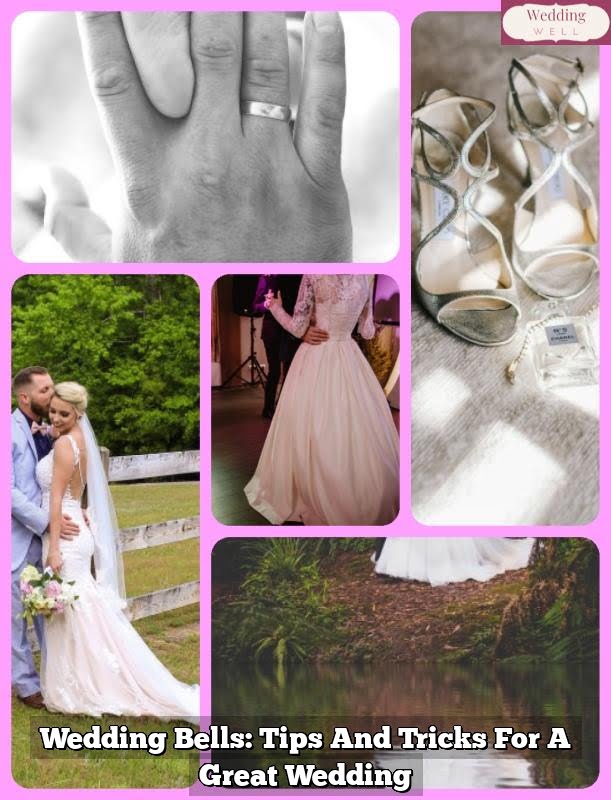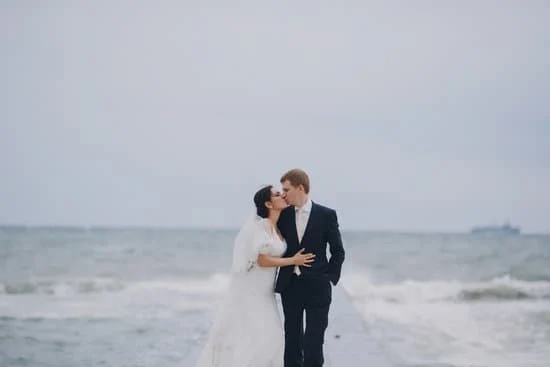Gypsy weddings have long been a fascinating and enigmatic tradition, shrouded in mystery and often misunderstood. From the intricate dresses to the elaborate rituals, there is much to learn about this cultural phenomenon. In this article, we will dive deep into the world of Gypsy weddings, exploring their history, cultural significance, unique fashion, and the role of family and community in these celebrations.
The tradition of Gypsy weddings has a rich heritage that spans centuries, with ancient roots that have evolved into modern-day celebrations. It is important to understand the historical and cultural context of these weddings in order to appreciate their significance within the Gypsy community.
As we delve deeper into this topic, we will also examine the challenges and controversies surrounding Gypsy weddings, as well as the planning process that goes into creating these lavish and joyous occasions. Additionally, we will explore how these traditions vary across different regions around the world, highlighting their diversity and contrasting practices.
Join us on this journey as we unravel the beauty and complexity of Gypsy wedding traditions, shedding light on a tradition that continues to captivate audiences around the globe.
The History of Gypsy Weddings
Gypsy weddings have a rich and diverse history that dates back centuries. The ceremonies and traditions associated with these weddings have evolved over time, blending ancient customs with modern-day celebrations. Understanding the history of gypsy weddings provides insight into the cultural significance and symbolism behind these joyous occasions.
Historically, gypsy weddings were arranged by the families of the bride and groom, often at a young age. These arrangements were based on factors such as social status, economic stability, and the compatibility of the couple. While arranged marriages are less common in modern gypsy communities, some families still adhere to this tradition.
In ancient times, gypsy wedding celebrations were elaborate affairs that lasted for several days. They were marked by lively music, traditional dances, and an abundance of food and drink. Today, while many aspects of these celebrations remain unchanged, modern gypsy weddings also incorporate contemporary elements such as live entertainment, professional photography, and themed decor.
Despite the evolution of gypsy wedding traditions, they continue to be deeply rooted in cultural heritage and familial ties. The blending of old and new customs in gypsy weddings reflects the resilience and adaptability of these communities in embracing change while honoring their ancestry.
| Gypsy Wedding Tradition | Historical Relevance |
|---|---|
| Arranged Marriages | Once common practice |
| Celebrations Lasting Several Days | Marked by lively music and traditional dances |
| Blending Old and New Customs | Honoring cultural heritage while embracing change |
The Cultural Significance of Gypsy Weddings
Gypsy weddings hold a deep cultural significance, characterized by a rich tapestry of symbolism, customs, and rituals that have been passed down through generations. These traditions provide insight into the values and beliefs of the Romani people and play a crucial role in the celebration of love and the formation of new families.
Symbolism in Gypsy Weddings
Symbolism is at the heart of Gypsy wedding celebrations. From the colors used in decorations to the specific rituals performed during the ceremony, every aspect holds a deeper meaning. For example, it is common for red to be incorporated into the bridal attire as it symbolizes good luck and fertility. Additionally, traditional Romani symbols such as the wheel and horseshoe are often woven into various elements of the wedding to bring blessings and protection to the newlyweds.
Customs and Rituals
Gypsy weddings are steeped in customs and rituals that reflect the cultural heritage of the Romani people. One such ritual is “jumping the broom,” where the couple jumps over a broom together to signify their entrance into a new phase of life.
Another important custom is the exchange of gifts between the families, which serves as a demonstration of mutual respect and solidarity. These customs and rituals not only add depth to the wedding festivities but also serve as a way for the community to uphold its traditions.
The Role of Tradition in Gypsy Weddings
Tradition plays a pivotal role in Gypsy weddings, serving as a way for individuals to connect with their roots while celebrating an important milestone in their lives. The adherence to these age-old customs conveys a sense of honor and reverence for tradition within Gypsy communities. This unwavering commitment to upholding their cultural practices shapes not only the wedding celebrations themselves but also fosters a strong sense of unity among family members and within Gypsy communities at large.
Understanding these cultural aspects provides invaluable insight into what makes gypsy weddings so unique and meaningful within Romani culture.
The Unique Fashion of Gypsy Weddings
Gypsy wedding fashion is known for its extravagant and ornate style, with a focus on intricate dresses, glittering jewelry, and elaborate hairstyles. The attire worn by the bride and groom, as well as their families and guests, is a crucial aspect of these celebrations. Here are some key elements of gypsy wedding fashion:
- Dresses: Gypsy brides often wear voluminous and heavily embellished dresses that exude opulence and grandeur. These dresses are typically adorned with lace, sequins, beads, and other intricate details. The gowns are often in vibrant colors such as red, purple, or gold, symbolizing prosperity and good fortune.
- Jewelry: Gypsy weddings are also characterized by the lavish use of jewelry. Brides are often seen wearing multiple necklaces, bracelets, earrings, and rings that are prominently displayed to signify wealth and prosperity. The jewelry is often passed down through generations and holds sentimental value within the community.
- Hairstyles: Elaborate hairstyles are a significant part of gypsy wedding fashion. Brides may have their hair styled in cascading curls or adorned with flowers and ornate accessories. Groomsmen may also sport stylish haircuts or traditional grooming styles as part of the celebration.
The fashion at gypsy weddings serves as a visual representation of the community’s values and traditions. It reflects the importance placed on family honor, beauty, prosperity, and cultural identity within the gypsy community.
Despite the beauty and significance of gypsy wedding fashion, it has been subject to controversy and scrutiny from outsider perspectives. Some critics have dismissed it as extravagant or outdated without fully understanding its cultural context. However, for those within the gypsy community, these clothing choices hold deep meaning and significance in preserving their heritage during important life events like weddings.
The Role of Family and Community in Gypsy Wedding Celebrations
Family Dynamics
In the context of a gypsy wedding, family plays a central role in the entire celebration. The union of two individuals is not only seen as a coming together of two souls but also as a merger of two families. The families of the bride and groom are heavily involved in the planning and execution of the wedding, with extensive support from relatives and even distant members of the community.
Community Support
The concept of community extends beyond just immediate family members in gypsy weddings. The entire community comes together to celebrate this special occasion, offering their help, support, and well wishes. Their involvement goes beyond simply attending the ceremony; guests often contribute by providing food, drinks, music, and even financial assistance to ensure that the celebration is extravagant.
Celebrating Love
Gypsy weddings are not just about two people coming together in holy matrimony. They are an opportunity for everyone to come together to celebrate love and unity within their extended community. It’s a time for joyous festivities that reinforce the bonds between families and communities. The overwhelming display of love and support during these celebrations truly showcases the deep-seated values of togetherness and communal harmony within gypsy culture.
By understanding these dynamics, it becomes evident that gypsy weddings go well beyond just being ordinary ceremonies; they exemplify strong familial bonds, communal support, and a collective celebration of love that transcends individual relationships.
The Challenges and Controversies Surrounding Gypsy Weddings
Gypsy weddings, also known as Romani weddings, are steeped in tradition and cultural significance. However, these beautiful celebrations are not without their challenges and controversies. One of the main issues surrounding gypsy weddings is the prevalence of misconceptions and stereotypes about the Romani people and their customs.
One common misconception about gypsy weddings is that they are all arranged marriages. While arranged marriages have been a part of some Romani communities, it is not a universal practice. This misconception perpetuates the stereotype that gypsy women have limited agency in choosing their partners, which can be harmful and discriminatory. In reality, many gypsy couples today enter into their marriages by choice, just like any other couple.
Another challenge facing gypsy wedding traditions is the discrimination and prejudice that the Romani people often face. This discrimination can manifest in various ways, from exclusion and marginalization to outright hostility. As a result, gypsy wedding celebrations may sometimes be met with prejudice or misunderstanding from those outside the community. It is important to address and challenge these prejudices in order to create a more inclusive and equitable society for all.
In light of these challenges and controversies, it is crucial to educate others about the true nature of gypsy weddings and to promote understanding and acceptance of Romani traditions. By dispelling misconceptions and stereotypes, we can celebrate the beauty and diversity of gypsy wedding traditions while working towards greater respect and inclusivity for the Romani people as a whole.
Planning a Gypsy Wedding
Gypsy weddings are deeply rooted in tradition and culture, with the planning process being an integral part of these celebrations. When it comes to planning a gypsy wedding, several key elements must be taken into consideration to ensure that the event is a true reflection of the couple’s heritage and values.
One of the most unique aspects of planning a gypsy wedding is the practice of arranged marriages. In many traditional Romani communities, parents play a significant role in selecting their children’s future spouses. This custom is based on the belief that parents have the wisdom and experience to choose suitable partners who will contribute to the stability and prosperity of the family.
In addition to arranged marriages, gypsy weddings are known for their lavish feasts and festivities. The wedding feast, often referred to as a “big fat gypsy wedding,” is an extravagant affair that brings together family, friends, and members of the community. The feast typically features an abundance of food, drinks, music, and dancing, serving as a joyous celebration of love and unity.
When planning a gypsy wedding, it’s essential to consider the cultural significance of various customs and rituals that are inherent to these celebrations. From elaborate dress designs to intricate hairstyles adorned with flowers and glittering jewelry, every aspect of the bride’s attire holds cultural significance. Not only does this reflect the beauty and diversity of Romani traditions, but it also serves as a way for individuals to express pride in their heritage through fashion choices.
Furthermore, gypsy weddings often involve elaborate ceremonies that symbolize unity and commitment between the couple. These rituals may include traditional blessings, dances, and symbolic gestures that hold deep meaning within Romani culture. By incorporating these customs into the wedding planning process, couples can create a meaningful and authentic celebration that pays homage to their cultural roots.
- Arranged marriages
- Lavish feasts
- Cultural significance in attire
- Symbolic ceremonies
Gypsy Wedding Traditions Around the World
Gypsy wedding traditions vary greatly around the world, with each region having its own unique customs and practices. In some countries, such as Romania and Spain, Gypsy weddings are elaborate and extravagant affairs, with large gatherings of family and community members celebrating the union of two individuals. The celebrations often include traditional music, dance, and feasting, reflecting the importance of shared culture and heritage within the Romani community.
In contrast, in other parts of the world such as India and Turkey, Gypsy weddings may adhere to more conservative and traditional customs. These ceremonies often involve arranged marriages, where the families play a significant role in choosing a suitable match for their children. The wedding rituals are deeply rooted in religious and cultural traditions, and may involve complex ceremonies that last for several days.
Furthermore, Gypsy wedding traditions in Eastern European countries like Hungary and Slovakia may incorporate a blend of old traditions with modern influences. While the underlying customs remain steadfast, younger generations may be more inclined to incorporate contemporary elements into their wedding festivities. This juxtaposition of past and present reflects the evolving nature of Gypsy wedding traditions around the world.
Overall, it is evident that Gypsy wedding traditions vary widely across different regions, highlighting the diversity and richness of Romani culture. By understanding these contrasting practices and regional variances, we can gain a deeper appreciation for the beauty and complexity of Gypsy wedding traditions worldwide.
Conclusion
In conclusion, the tradition of a Gypsy wedding is an intricate and diverse cultural practice that spans centuries and continues to thrive in various parts of the world. As we have explored the history, cultural significance, unique fashion, and family/community role in Gypsy weddings, it becomes evident that these celebrations are steeped in deep-rooted symbolism, customs, and rituals that are rich with meaning.
Despite the challenges and controversies that surround Gypsy weddings, it is important to recognize and embrace the beauty and diversity of these traditions.
Gypsy weddings are not only a celebration of love and unity but also a display of the vibrant cultural heritage of the Romani people. The elaborate dresses, glittering jewelry, and intricate hairstyles worn by brides are not just for show but represent a connection to their cultural identity and pride. Additionally, the strong emphasis on family and community in Gypsy weddings emphasizes the importance placed on support, unity, and solidarity within these communities.
As we continue to explore and learn about Gypsy wedding traditions around the world, it is essential to approach these celebrations with an open mind and a willingness to understand their significance. By doing so, we can celebrate the beauty of diversity while dispelling misconceptions and stereotypes surrounding what is a gypsy wedding. Ultimately, embracing the traditions of Gypsy weddings honors the legacy of ancient practices while celebrating love in all its forms.
Frequently Asked Questions
What Is the Tradition of the Gypsy Wedding?
The tradition of the Gypsy wedding is steeped in cultural significance and can vary among different Romani communities. However, common elements include elaborate and colorful attire, grand celebrations, and strong familial involvement. These weddings are often seen as a way to preserve Gypsy culture and traditions.
What Is a Gypsy Lifestyle?
A Gypsy lifestyle typically revolves around close-knit families, nomadic or semi-nomadic living arrangements, and a strong emphasis on traditions and cultural customs. Many Romani people also practice traditional occupations such as horse trading, metal work, or music. The lifestyle is often characterized by a deep sense of community and a distinct identity.
What Is the Average Age of Gypsy Marriage?
The average age of Gypsy marriage tends to be quite young compared to the general population. In some Romani communities, it is not uncommon for individuals to marry in their mid to late teens, with marriages often being arranged by families. This early age of marriage reflects the importance placed on family and cultural continuity within the Gypsy community.

Welcome to my blog about home and family. This blog is a place where I will share my thoughts, ideas, and experiences related to these important topics. I am a stay-at-home mom with two young children. I hope you enjoy reading it! and may find some helpful tips and ideas that will make your home and family life even better!





